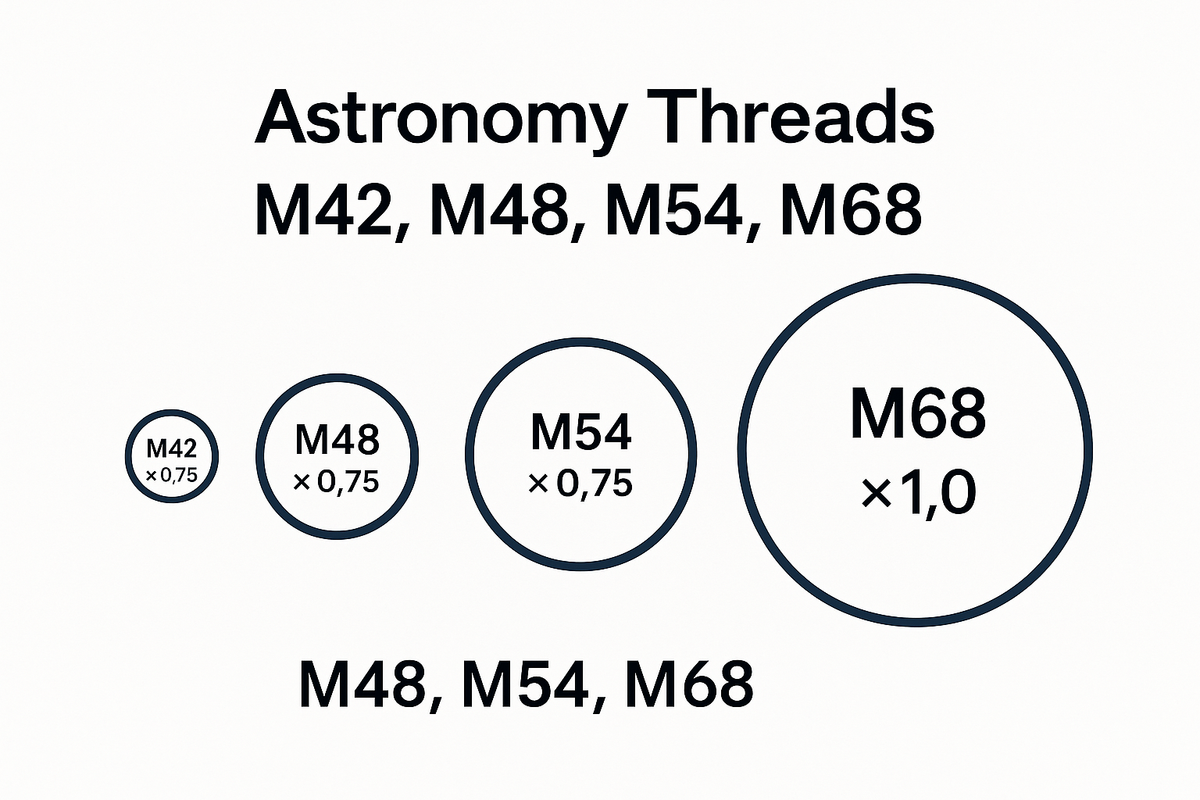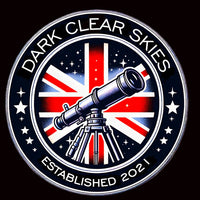
Understanding Astronomy Thread Standards: M42, M48, M54, and M68 Explained
When building an astrophotography setup or configuring visual astronomy gear, one of the most crucial.
— and often overlooked — aspects is thread compatibility. Understanding the common thread types used in astronomy ensures your accessories, cameras, filters, and focusers work together smoothly. In this blog, we’ll break down the most frequently encountered threads in amateur and professional astronomy: M42, M48, M54, and M68.
What Are Thread Standards?
Threads are standardized screw-type connections measured in millimetres. Each designation includes:
-
Outer Diameter (mm)
-
Thread Pitch (mm) – the distance between thread peaks
In astronomy, these standards allow different components to connect securely with minimal flexure or misalignment.
M42 × 0.75 – The T-Thread
Diameter: 42 mm
Pitch: 0.75 mm
Common Uses:
-
T-rings for DSLR cameras
-
Planetary and guide cameras (e.g., ZWO ASI120, Player One series)
-
1.25" eyepiece accessories (via adapters)
Notes:
M42 × 0.75 is often referred to as the T-thread, a legacy standard widely used in imaging setups. It should not be confused with M42 × 1.0, which is used in old Pentax camera lenses.
Ideal For: Entry-level imaging, planetary setups, DSLR photography
M48 × 0.75 – The 2-Inch Filter Thread
Diameter: 48 mm
Pitch: 0.75 mm
Common Uses:
-
2" filters (narrowband, UHC, LRGB)
-
Field flatteners and reducers
-
Filter drawers and filter wheels
-
Wide-field imaging accessories
Notes:
M48 is the standard thread size for 2-inch filters, widely adopted for medium- to large-sensor astrophotography.
Ideal For: APS-C sensors, 2" filter systems, wide-field imaging
M54 × 0.75 – The Wider Interface
Diameter: 54 mm
Pitch: 0.75 mm
Common Uses:
-
High-end flatteners and correctors
-
Sky-Watcher Esprit focusers
-
ZWO and other modular accessories
Notes:
M54 is used for more complex imaging trains requiring better light path coverage. It's especially helpful when building low-profile, wide-aperture setups with minimal vignetting.
Ideal For: Large sensor imaging, intermediate to advanced setups
M68 × 1.0 – The Large Format Standard
Diameter: 68 mm
Pitch: 1.0 mm
Common Uses:
-
Premium flatteners and correctors
-
Baader, TS-Optics, APM accessories
-
Full-frame and large-format imaging cameras
Notes:
M68 provides a very secure and rigid connection, ideal for large imaging trains. It's commonly used in observatory-class systems and supports full-frame and beyond without vignetting.
Ideal For: Full-frame astrophotography, observatory-grade gear, heavy imaging setups
How to Adapt Between Thread Sizes
Most manufacturers offer adapters to step up or down between thread sizes:
-
M42 to M48
-
M48 to M54
-
M54 to M68
These adapters often come as rotators, spacers, or couplers and are essential for achieving correct back focus and avoiding misalignment.
Tip:
Always check whether you're adapting male to female or female to male threads. Thread direction and gender must match your gear.
Choosing the Right Thread for Your Setup
| Sensor Size | Minimum Thread Recommended |
|---|---|
| 1/3" to 1" (planetary) | M42 |
| APS-C | M48 |
| Full Frame | M54 or M68 |
| Medium Format | M68+ |
Using too narrow a thread (like M42 on an APS-C or full-frame sensor) can introduce vignetting or reduce illumination at the sensor corners.
Conclusion
Thread compatibility is a key part of building a solid, well-aligned astrophotography or visual observation setup. Whether you’re connecting a DSLR, Astro camera, flattener, or filter wheel, knowing your M42, M48, M54, and M68 threads will help you avoid frustration and ensure optimal performance.
At Dark Clear Skies UK, we’re always happy to advise on correct threading, spacing, and adapter options — just reach out if you need help connecting your gear.
Happy observing!
